= Well No. 1
2018-Ongoing
Video, Performance, and Installation
EXHIBITION:
2022
ACM SIGGRAPH Digital Arts Community Exhibition, The Earth, Our Home: Art, Technology, and Critical Action
2018
Mona Bizmarck American Center, Paris, France, installation with sculpture, single-channel videos - “ferdows,” “tasliat,” and “peydah yesh = Well No. 1”
Encours Gallery, Paris, France, video - “ferdows = Well No. 1”
PERFORMANCES WITH VIDEO:
2019
Science Gallery Dublin, Dublin, Ireland, Art in the Anthropocene, “Burying Well No. 1 and You Along With It”
Starr Bar, Brooklyn, New York, “Burying Well No. 1 and You Along With It”
2018
Encours Gallery, Paris, France, “Burying Well No. 1 and You Along With It”
EXHIBITION:
2022
ACM SIGGRAPH Digital Arts Community Exhibition, The Earth, Our Home: Art, Technology, and Critical Action
2018
Mona Bizmarck American Center, Paris, France, installation with sculpture, single-channel videos - “ferdows,” “tasliat,” and “peydah yesh = Well No. 1”
Encours Gallery, Paris, France, video - “ferdows = Well No. 1”
PERFORMANCES WITH VIDEO:
2019
Science Gallery Dublin, Dublin, Ireland, Art in the Anthropocene, “Burying Well No. 1 and You Along With It”
Starr Bar, Brooklyn, New York, “Burying Well No. 1 and You Along With It”
2018
Encours Gallery, Paris, France, “Burying Well No. 1 and You Along With It”

1
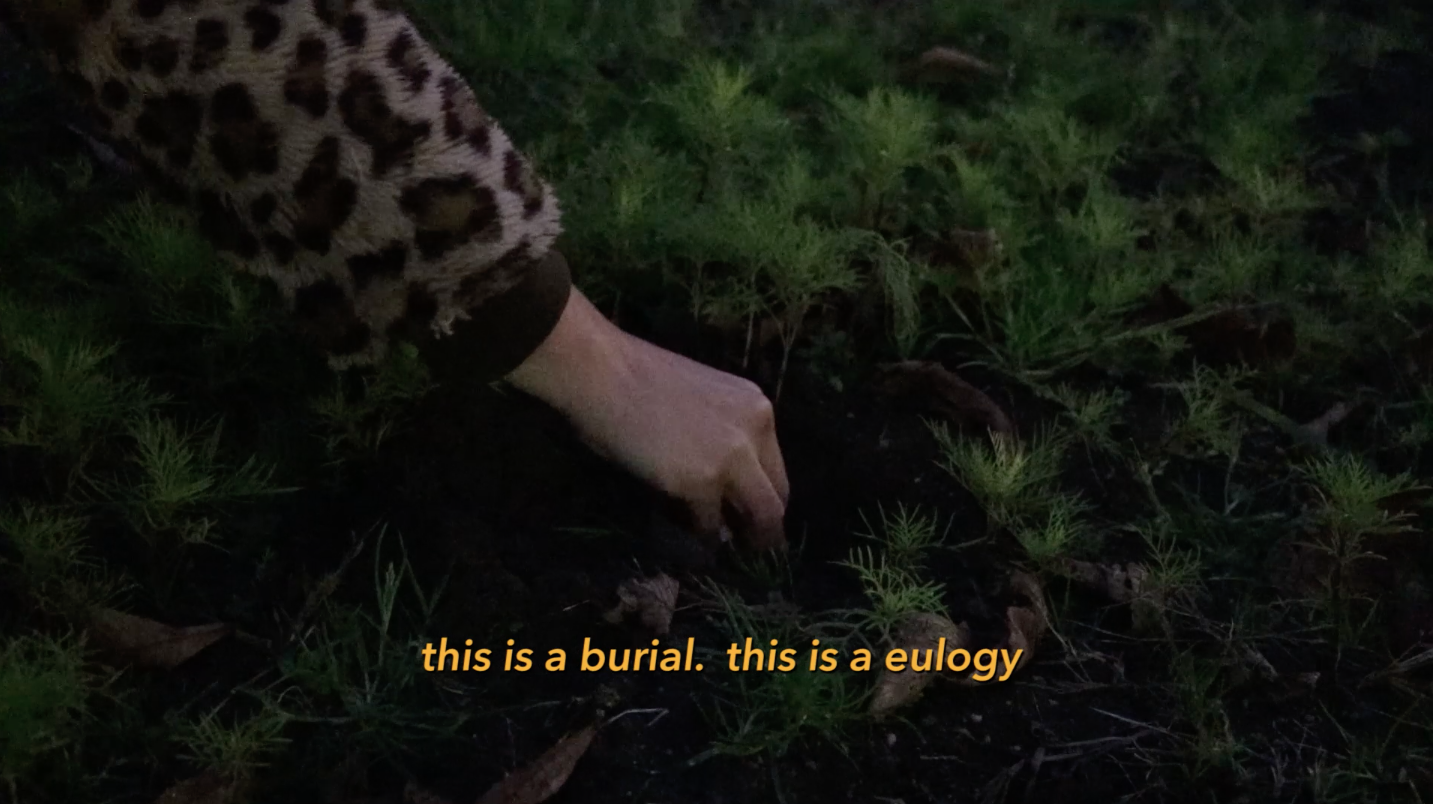
2

3

4
5
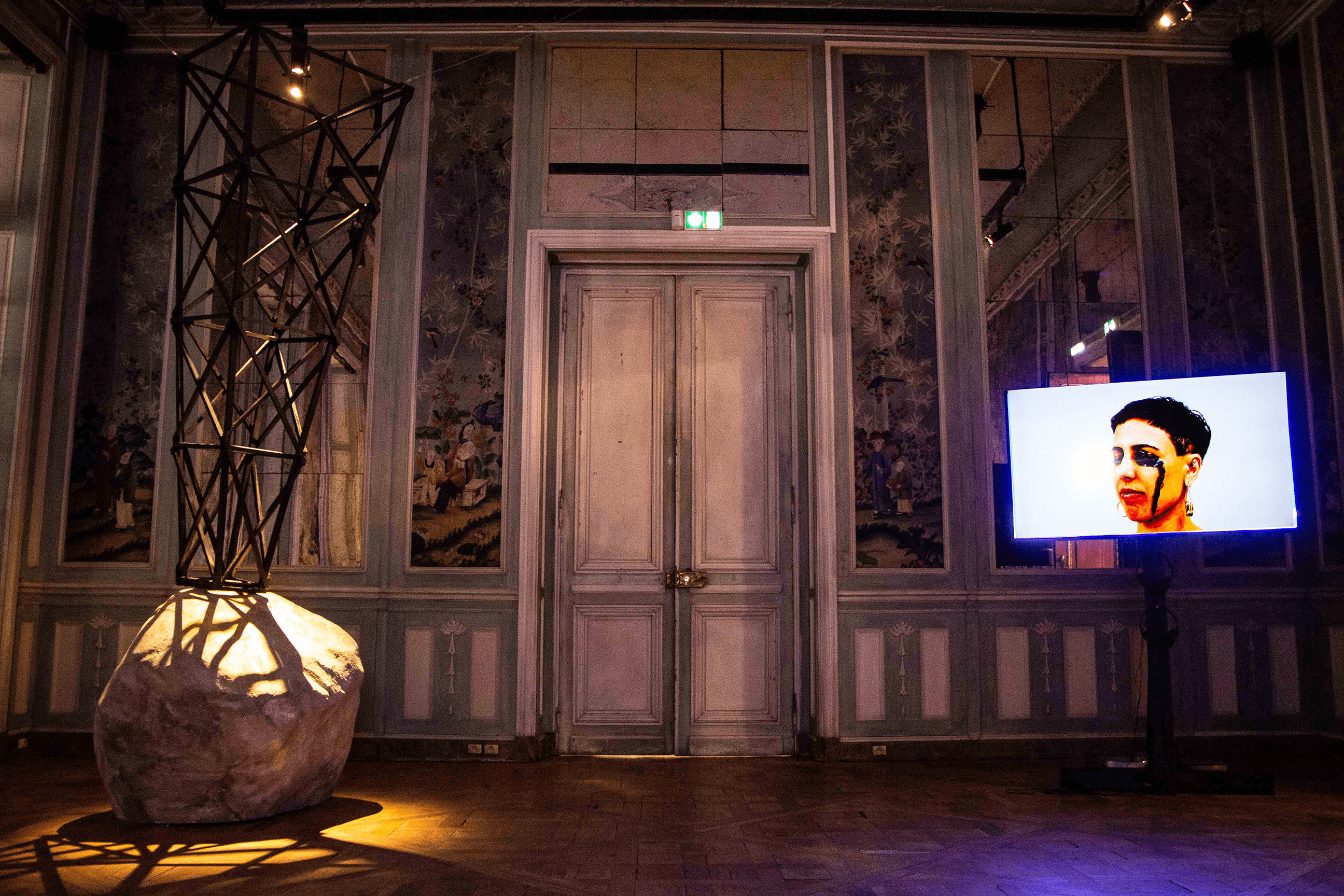
6
Édouard Glissant builds his language with rocks. I re-write histories with limestone and
sandstone: reservoir rocks that hold dried up blood and wet petroleum
deposits. We come from the rocks:
“fossil fuels are forms of energy in which great quantities of space and time,
as it were, have been compressed into a concentrated form.”
I call to the prehistories and to the mythologies that hold fractured landscapes beneath, what is now industrialized dust and wind. I find my place somewhere between the layers. Somewhere between imagination and memory. Somewhere between history and mythology. Somewhere between your traditions and my words. I set out to create my own Persian mythology. This is = Well No. 1.
= Well No. 1 is a series of videos, ritual performances, and infrastructural meditations that serve to reverse this history of commercial oil extraction as a practice in radical healing and transformative possibility.
In 1908, the British established Well No. 1 in Iran. This commercial oil discovery led to the creation of one of the largest oil companies, now BP, and launched the modern petroleum industry in Southwest Asia. The well acts as a symbol for the violent industrialization and imperialism led by Britain as well as France. Orientalism was key in justifying exploitation of labor and environment, cultural and spiritual erasure, and manipulation of Iranian political systems. = Well No. 1 places the oil well as a site of contestation. The sculpture displaces it from its origin to be interfered with or sabotaged. The oil well is both leading back into and emerging from limestone. The videos reclaim archive and enact ritual (burial, cleansing, mourning, and transference) as practices in resistance, sovereignty, and restoration. Since this oil was once a source for Zoroastrian fire temple ceremonies, as captured in Ferdowsi’s Shahnameh (Book of Kings), I attempt to restore its sacredness and cultural importance and our relationship to the Earth.
Drawing on my own experience as a first-generation Iranian-American, I implicate myself into this story to unearth what has brought me to this place in time and space. Françoise Vergès suggests in this racial capitalocene we must return to our beliefs and healing practices in relationship to Mother Earth. Transformative spiritual practice ties to critical action and political movement. We put back the oil and oppose the neo-liberal political arrangements made to put us in this position and have brought on an acceleration of extractionism, global conflict, and climate destruction
1 “peydah yesh = Well No. 1” Video Still
[Image description: Washed out images show olive-skinned femme with short pixie-cut dark brown hair, almost black, standing mid-torso in the frame, her eyes looking down, oil painted on her torso up to her shoulder blades. Layered with this image is a two-toned royal blue and white scene with blue smoke wrapped in front of her face and off-white desert background]
2 “ferdows = Well No. 1” Video Still
[Image description: Dark moody scene. In the foreground are two arms with sleeves from a fuzzy leopard coat, digging into dirt at the center of the frame. The small dirt patch is surrounded by vivid green grass. At the bottom of the frame yellow italicized words read “this is a burial. this is a eulogy”
3 “peydah yesh = Well No. 1” Video Still
[Image description: Two video frames layered, one taking the full frame in the background, large rocks stacked in blue and purple tones. The smaller second frame, about one-third smaller, features a still of a desert hills and a dark blue background]
4 Installation view. Mona Bismarck American Center, Paris 2018. © Vinciane Lebrun/Voyez-Vous
[Image description: On the left of the frame, stands a floor-to-ceiling sculpture of an oil well upside down heading into a boulder. Lighting makes oil well shadows onto the rock and onto the wall by the floor-to-ceiling beige and turquoise French doors. On the right is a screen on a black pedestal featuring a clip from “peydah yesh = Well No. 1” of a doubled body kneeling, in the frame, from the nose to the knees with oil painted on her whole body over an azure-colored background]
5 ferdows = Well No. 1 is the preface to the mythology chapters. In Farsi, ferdows means heaven or paradise. The word also draws homage to Persian poet Ferdowsi and his epic Shahnameh (Book of Kings).
6 Installation view. Mona Bismarck American Center, Paris 2018. Photo Credit: Asher Sackman
[Image description: On the left of the frame, stands a floor-to-ceiling sculpture of an oil well upside down heading into a boulder. On the right is a screen on a black pedestal screening a clip from “tasliat = Well No. 1”. In it, an olive skinned femme with short pixie-cut dark brown hair, almost black, has her eyes closed, as liquid oil drips from her left eye down her cheek in a thick trail. Her head appears from the neck up, close-up on the screen in front of a white background]
additional images and videos upon request
I call to the prehistories and to the mythologies that hold fractured landscapes beneath, what is now industrialized dust and wind. I find my place somewhere between the layers. Somewhere between imagination and memory. Somewhere between history and mythology. Somewhere between your traditions and my words. I set out to create my own Persian mythology. This is = Well No. 1.
= Well No. 1 is a series of videos, ritual performances, and infrastructural meditations that serve to reverse this history of commercial oil extraction as a practice in radical healing and transformative possibility.
In 1908, the British established Well No. 1 in Iran. This commercial oil discovery led to the creation of one of the largest oil companies, now BP, and launched the modern petroleum industry in Southwest Asia. The well acts as a symbol for the violent industrialization and imperialism led by Britain as well as France. Orientalism was key in justifying exploitation of labor and environment, cultural and spiritual erasure, and manipulation of Iranian political systems. = Well No. 1 places the oil well as a site of contestation. The sculpture displaces it from its origin to be interfered with or sabotaged. The oil well is both leading back into and emerging from limestone. The videos reclaim archive and enact ritual (burial, cleansing, mourning, and transference) as practices in resistance, sovereignty, and restoration. Since this oil was once a source for Zoroastrian fire temple ceremonies, as captured in Ferdowsi’s Shahnameh (Book of Kings), I attempt to restore its sacredness and cultural importance and our relationship to the Earth.
Drawing on my own experience as a first-generation Iranian-American, I implicate myself into this story to unearth what has brought me to this place in time and space. Françoise Vergès suggests in this racial capitalocene we must return to our beliefs and healing practices in relationship to Mother Earth. Transformative spiritual practice ties to critical action and political movement. We put back the oil and oppose the neo-liberal political arrangements made to put us in this position and have brought on an acceleration of extractionism, global conflict, and climate destruction
1 “peydah yesh = Well No. 1” Video Still
[Image description: Washed out images show olive-skinned femme with short pixie-cut dark brown hair, almost black, standing mid-torso in the frame, her eyes looking down, oil painted on her torso up to her shoulder blades. Layered with this image is a two-toned royal blue and white scene with blue smoke wrapped in front of her face and off-white desert background]
2 “ferdows = Well No. 1” Video Still
[Image description: Dark moody scene. In the foreground are two arms with sleeves from a fuzzy leopard coat, digging into dirt at the center of the frame. The small dirt patch is surrounded by vivid green grass. At the bottom of the frame yellow italicized words read “this is a burial. this is a eulogy”
3 “peydah yesh = Well No. 1” Video Still
[Image description: Two video frames layered, one taking the full frame in the background, large rocks stacked in blue and purple tones. The smaller second frame, about one-third smaller, features a still of a desert hills and a dark blue background]
4 Installation view. Mona Bismarck American Center, Paris 2018. © Vinciane Lebrun/Voyez-Vous
[Image description: On the left of the frame, stands a floor-to-ceiling sculpture of an oil well upside down heading into a boulder. Lighting makes oil well shadows onto the rock and onto the wall by the floor-to-ceiling beige and turquoise French doors. On the right is a screen on a black pedestal featuring a clip from “peydah yesh = Well No. 1” of a doubled body kneeling, in the frame, from the nose to the knees with oil painted on her whole body over an azure-colored background]
5 ferdows = Well No. 1 is the preface to the mythology chapters. In Farsi, ferdows means heaven or paradise. The word also draws homage to Persian poet Ferdowsi and his epic Shahnameh (Book of Kings).
6 Installation view. Mona Bismarck American Center, Paris 2018. Photo Credit: Asher Sackman
[Image description: On the left of the frame, stands a floor-to-ceiling sculpture of an oil well upside down heading into a boulder. On the right is a screen on a black pedestal screening a clip from “tasliat = Well No. 1”. In it, an olive skinned femme with short pixie-cut dark brown hair, almost black, has her eyes closed, as liquid oil drips from her left eye down her cheek in a thick trail. Her head appears from the neck up, close-up on the screen in front of a white background]
additional images and videos upon request
Firoozeh
2016 - Ongoing
Multimedia (Video, Installation, and Community Collaboratory)
Video still featured as cover artwork for Catalyst: Vol 6. No. 2 (2020): Special Section on Computing in/from the South
edited by Sareeta Amrute & Luis Felipe R. Murillo, November 2020
Video still featured as cover artwork for Catalyst: Vol 6. No. 2 (2020): Special Section on Computing in/from the South
edited by Sareeta Amrute & Luis Felipe R. Murillo, November 2020

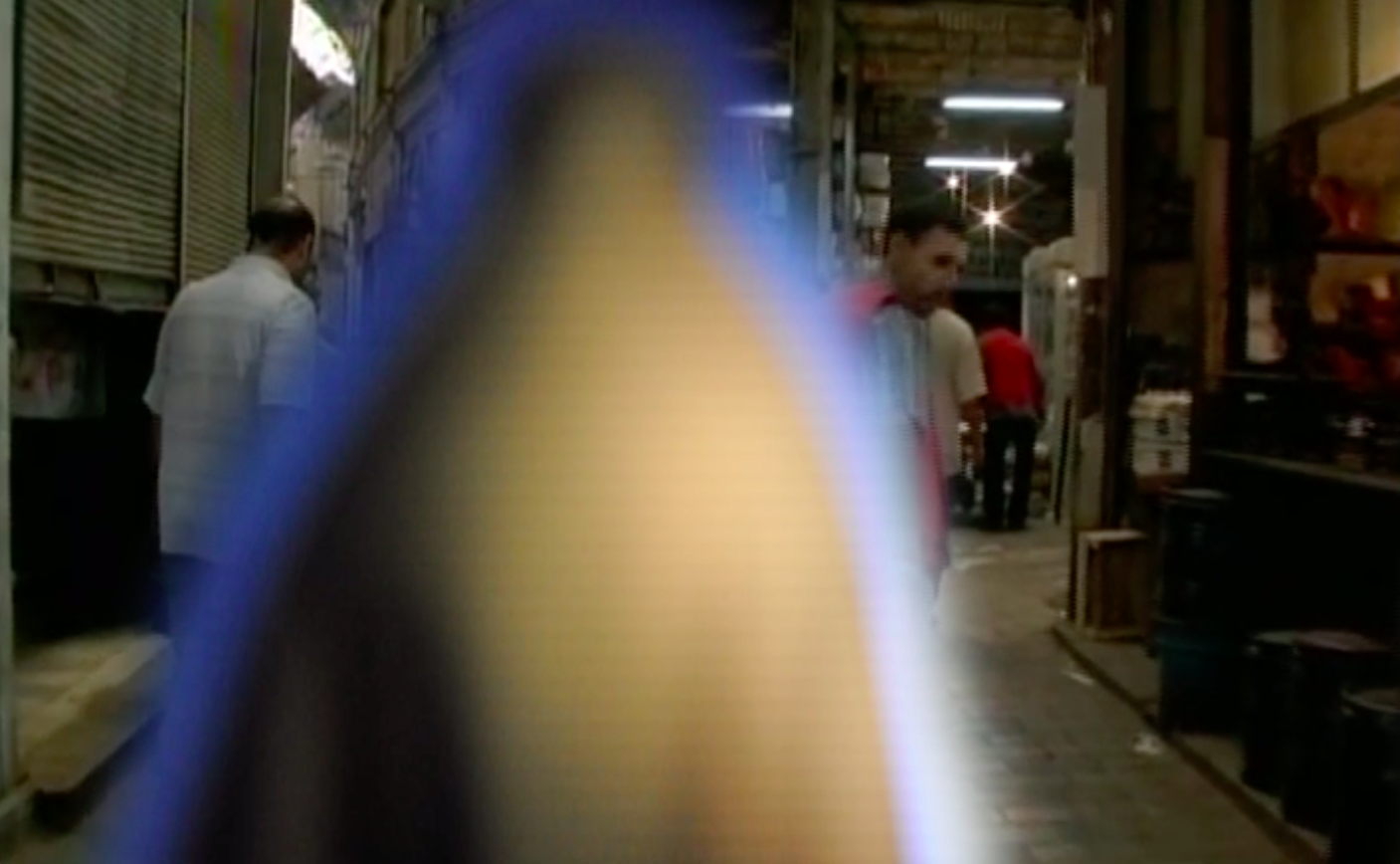
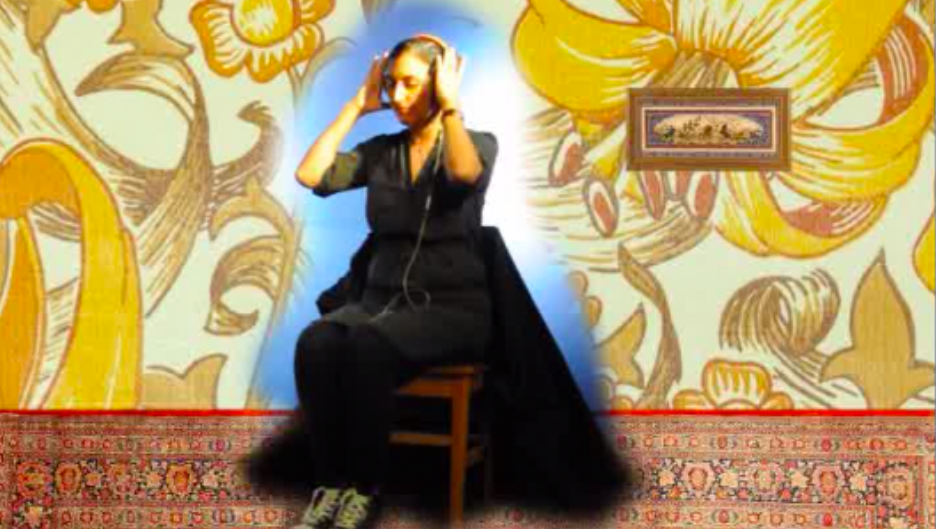
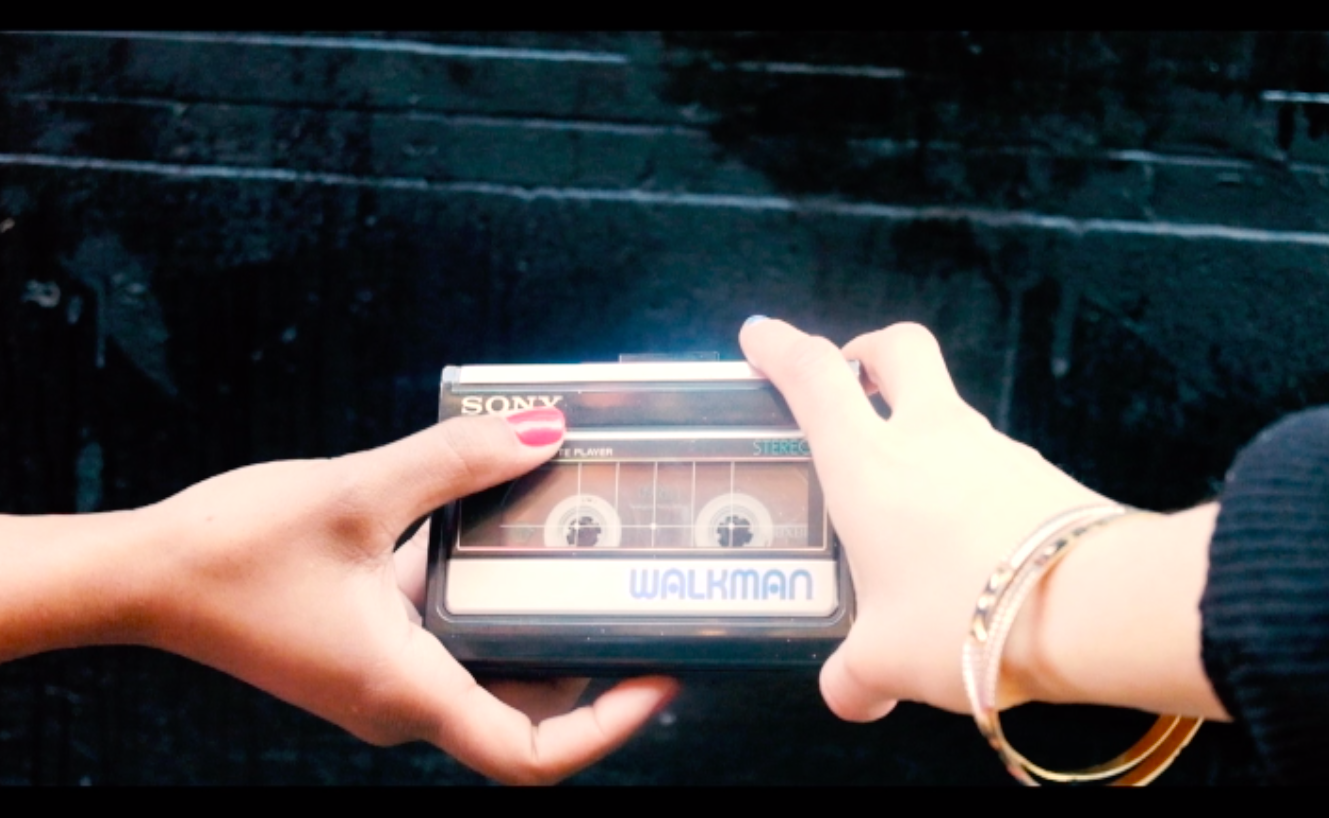 Video stills
Video stillsFiroozeh is a magical realist fiction that speculates technology as talisman passed amongst feminists in the aftermath of the 1979 Iranian Revolution. Betrayed by the Revolution, a discreet trust network of activists utilize a portable cassette player -- equipped with the mystical energy of turquoise stone -- to find collective protection, resistance, and healing for the continued fight for liberation.
In the periods before and after the Iranian Revolution, the portable cassette player and corresponding tapes were an underground method to transmit and circulate radical ideas and cultural materials, circumventing state-sanctioned censorship and surveillance.